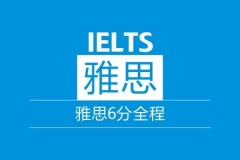佛山禅城区哪里有雅思培训机构
佛山禅城区哪里有雅思培训机构
【开设课程】:雅思预备班,雅思基础班,雅思*分班,雅思保分班,雅思封闭班,雅思5分,雅思6分、雅思6.5分。
雅思一对一辅导
招生对象:
1. 未参加过雅思培训或学习,希望集中强化突破;
2. 雅思考试没有突破方向,参加过培训但是一直单项差0.5分;
3. 基础薄弱,没有合适的大班课程,需要个性化定制的学员;
4. 考试紧迫,希望尽快获得雅思目标分6.0-6.5分的学员;
课程特点:采用“**老师带队教学”,将雅思备考科学的分解成为三个方面,**老师主管教学,二线教师负责助教,班主任负责学生生活和其他事情;
课程优势:
1. 雅思教师,有丰富的教学经验和专业的教研水平;
2. 为学员达到预期效果,启动无条件更换老师的服务;
3. 因材施教,个性化的VIP教学和生活服务; 培训内容:雅思听、说、读、写四科基础课程,语言能力拓展课程,专项*分课程,综合*分课程
增值服务:教学主管全程跟踪确保学习质量+总课程10%为助教答疑课程+雅思考官口语模拟测评+每日作业批改 +全真模拟测试;每周课程内容和学生进步状况,邮件以及电话及时沟通。
免费试听课,让学员可先免费试听体验学习效果,试听课名额、时间有限!!!
试听课名额获得方式(只需将姓名+所在地区+想要学习的课程发送到老师手机上,即可获得免费试听课名额)
如何提升雅思阅读速度?
相信不少烤鸭对雅思阅读的感情是复杂的,因为它常常是助我们拉高总分的小仙女,同时又是磨人的小妖精:文章长,题目多,时间短……行了,别说了,说多了都是泪!
事实上,一小时内要读三篇800-900字左右的英语文章,还要做40道题,就算是一个native
speaker也很难在这么短的时间内把所有文章看通透啊。
既然如此,问题来了,雅思阅读考试的目的,是让你通读全文吗?
答案,显然是否定的。
“阅读”重点考验的,是提取信息的能力。这种能力,就如同我们读中文报纸时,即便只是的浏览,也能找到新闻的要点和想要的内容。
而细心观察会发现,读报纸时,我们会下意识地通过省略掉一些相对不重要的信息,来缩短阅读的时间。
而这种“下意识”,并非毫无依据,只是我们没有察觉。而个中依据,在英语阅读中也同样奏效,因为它们实际上都是较基本的“逻辑信号”,只是变成英语之后,我们的感觉没有那么敏锐而已。
那么下面,就来看看有哪些基本“逻辑信号”,它们在英语中又是如何表达的:
1.因果关系,重点看“果”
在文章当中,“因为”引导的内容,往往是一段陈述或铺垫,“所以”引导的内容,才是结论和总结。所以速览时,我们可以暂且把“原因”的部分略过,先看“结果”的部分,从而减省把握文章重点的时间。
引出“原因”的常用表达:because, because of, as a result of, result of, due to,
thanks to, owing to, since, for, grateful for等,如:
“Since employees have different needs, what acts as a
reinforcement for one may not for another.”
(剑桥雅思*题6, Test 3, Reading Passage 2)
“Since”所在的前半句是原因,关键看后半句的结果(结论)。
引出“结果”的常用表达:so, therefore, hence, thus, result in, lead to,
consequently, as a result等,如:
“Such findings suggest that one person’s equity is another’s inequity, so an ideal should probably weigh different inputs and outcomes
according to employee group.”
(剑桥雅思*题6, Test 3, Reading Passage 2) :重点看“so”所在的后半句;
“Speech is often unclear and ambiguous. Where
possible,therefore, the recording has to be supplemented by the
observer’s written comments on the non-verbal behaviours of the participants,
and about the context in general.”
(剑桥雅思*题4, Test 3, Reading Passage
3):重点看“therefore”所在的第二句。
2.转折关系,忽略“让步”,看“但是”
“让步”的内容再豪华,都敌*一个“但是”。这个道理很显浅,就不多作解释了。而浏览文章时,我们就可以暂且只看“转折”部分的内容。反之,遇到“让步”的内容,我们则可暂时忽略不看。
(1)常见表“转折”的说法
常见表“转折”的说法还有:but,however,nevertheless,yet,nonetheless等,如:
“Down the centuries, thousands of wells were constructed throughout
northwestern India, but the majority have now fallen into
disuse…”
(剑桥雅思*题10, Test 1, Reading Passage 1) :无论前面说了什么,也改变不了“the
majority (of wells)”被弃用的现实。重点显然在转折词“but”之后。
(2)引导“让步”的常用说法
引导“让步”的常用说法有:whereas,although,though,while,whereas,despite,in spite
of,for all等,如:
“Whereasmost exercises are designed to build up strength
or endurance, plyometrics focuses on increasing power – the rate at which an
athlete can expend energy.”
(剑桥雅思*题4, Test 4, Reading Passage 1) “whereas”所在的半句为让步状语从句,重点看另一个半句(转折的内容)。
3.递进关系,看“后面”
所谓递进,即前后保持一致意见的情况下,后者在态度和语气上更进一步。故,读懂后者,即可得知前者。速览文章时,重点先读递进后面的内容。
常见表达“递进”的说法有:furthermore,moreover,not only…but also…,in
addition等,如:
“The psychiatrists felt that ‘most subjects would not go beyond 150 volts’
and they further anticipated that only four per cent would go up to 300 volts. Furthermore, they thought that only a lunatic fringe of about
one in 1,000 would give the highest shock of 450 volts. ”
(剑桥雅思*题5, Test 1, Reading Passage 2) 即便不读前面的句子,光靠“Furthermore”后面递进的内容也可知,精神病学家预测:会执行高伏电击的人是少之又少的。
4.借助“承上、启下”的句子,找段落重点
承上:
以“代词”或“所以”为开头的段落首句,一般都是承接或总结上一段话的内容。借助这样的句子,可以得知上一段话的内容重点。如:
“代词”开头:
“These research findings are exciting. There is growing
evidence in New Zealand that…”
(剑桥雅思*题5, Test 3, Reading Passage 1) 这是文中较后一段的开头。
从首句的代词“These”可知,首句是对上一段内容的承接,并可知上一段讲述的是一些“exciting research findings”。
“所以”开头:
“Thus ageing and death should not be seen as inevitable,
particularly as the organism possesses many mechanisms for repair. It is not, in
principle, necessary for a biological system…”
(剑桥雅思*题8, Test 3, Reading Passage 3) 从段落首句的“Thus”可知,首句是对上一段内容的承接,而并非本段内容的重点。
启下:“问句”和“量词+复数词”通常是引出下文,通过它们能了解所在段落或紧随其后的段落的内容重点。如:
“问句”: “What were the actual results? (借此问句可知本段的重点是“actual
results”)Well, over 60 per cent of the teacher-subjects continued to obey
Milgram up to the 450-volt limit in repetitions of the experiment in other
countries, the percentage of obedient teacher-subjects was even higher, reaching
85 per cent in one country. How can we possibly account for this vast
discrepancy between what calm, rational, knowledgeable people predict in the
comfort of their study and what pressured, flustered, but cooperative ‘teachers’
actually do in the laboratory of real life?
(较后的问句揭示,后面段落的重点内容是解释“this vast discrepancy”的原因)” (剑桥雅思*题5, Test 1,
Reading Passage 2)
“量词+复数词”:“Yet opinion polls suggest that many people
nurture the belief that environmental standards are declining andfour
factors seem to cause this disjunction between perception and
reality.”
(剑桥雅思*题5, Test 1, Reading Passage 3) “four
factors”告诉我们,接下来的段落中,重点应该是关于这四种因素的描述。
5.遇到“what”时请细看
“what”经常用作表目的或具总结性的句子的开头,因此,遇到what开头的句子要多看两眼,如:
“…If the subject was still reluctant to proceed, Milgram said that it was
important for the sake of the experiment that the procedure be followed through
to the end. His final argument was ‘you have no other choice. You must go on’. What Milgram was trying to discover was the number of
teacher-subjects who would be willing to administer the highest levels of shock,
even in the face of strong personal and moral revulsion against the rules and
conditions of the experiment.”
(剑桥雅思*题5, Test 1, Reading Passage 2) 原文中,此段很长,但全部都只是属于一次实验过程的描述。较后才以“what”为开头的句子,总结性地道出了实验的目的,使得此句成为全段重点。
以上五个方法你都get了吗?

更多培训课程,学习资讯,课程优惠等学校信息,请进入 佛山禅城区雅思培训禅城区托福培训禅城区sat培训 网站详细了解,免费咨询电话:400-998-6158










